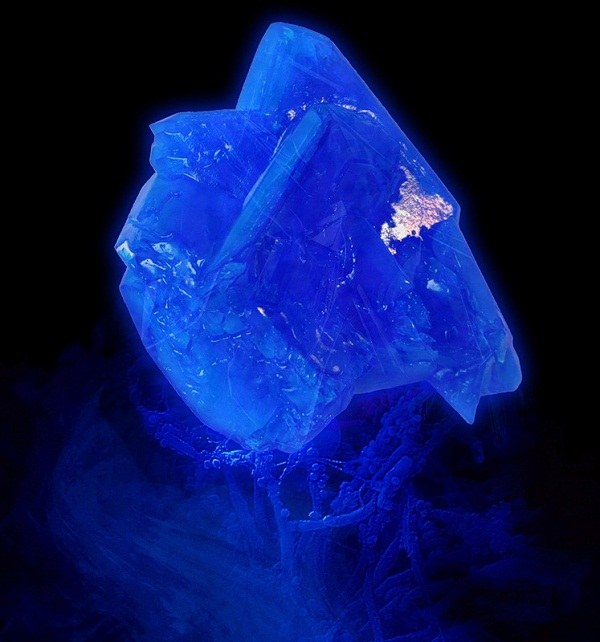You will need
- - sulphate of copper (blue vitriol, CuSO4);
- heat - resistant glass chemical flask or glass jar;
- - the seed on a string (a piece of copper wire);
- - sandpaper;
- - a sheet of paper;
- - rod from a ball pen;
- - gauze;
- - rubber gloves;
- - distilled or boiled water.
Instruction
1
Prepare all the necessary materials. It is best to purchase as clean as possible copper sulfate, which is sold in stores with the reagents (grade analytical grade, reagent GRADE, CHA). If this is not possible, use copper sulfate from the hardware store. The more pure the stuff you use, the better will be the crystals. You still need a heat-resistant glass chemical flask, to dissolve this substance. Suitable and conventional small jar of glass, for example, 0.7 or 1 l. Before use, wash very carefully selected capacity.
2
If you use pure copper sulphate from the store of reagents for best results, take distilled water. For conventional copper sulfate from the hardware store will fit boiled.
3
Now you need to make a saturated solution. Heat water to 60-70 degrees. Gradually add the sulphate of copper, immediately stirring him. Do that until, until the blue powder will no longer dissolve, this means that the solution is ready. It is important that the liquid remained hot. If it is cold, place the vessel in a water bath and heat the solution.
4
When a saturated solution is ready, filter it. To do this, strain the liquid through cheesecloth into another glass container. Use hot glass dish, otherwise the copper sulphate may crystallize ahead of time. To avoid this, simply rinse jar or beaker with hot water.
5
As a seed you can use a piece of copper wire. Clean it with emery paper, roll to desired shape and tie him to the thread. Or you can wait until the bottom of the jar with a saturated solution of the formation of small crystals of copper sulphate, and have them to use as starters.
6
Crystals will appear on the bottom of the vessel by themselves, if the solution has a sufficient concentration. Get them dry. As a seed it is better to use the large and smooth entity, preferably without external defects. Tie it with thread. If it slides off, you can slightly grind the crystal in the middle, making a notch.
7
Place a seed crystal from crystal or copper wire into the banks so that the sinker does not touch the walls or bottom of the vessel. To do this, you can bind a string to the rod of a ballpoint pen and put it on the neck. Now cover the jar with paper and leave for a few days.
Note
Concentrated copper sulphate is toxic, so work with him in rubber gloves. In no case should not drink the resulting liquid. Drops should not fall on the skin. If the solution gets into eyes, rinse and consult a doctor.
Useful advice
If you want to save the resulting crystals of copper sulphate, cover them with colourless varnish, otherwise they will erode.
